GrabCAD
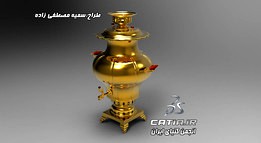
Samovar
by GrabCAD
Last crawled date: 1 year, 11 months ago
Samovars are typically crafted out of plain iron, copper, polished brass, bronze, silver, gold, tin, or nickel. A typical samovar consists of a body, base and chimney, cover and steam vent, handles, faucet and key, crown and ring, chimney extension and cap, drip-bowl, and teapot. The body shape can be an urn, krater, barrel, cylinder, or sphere. Sizes and designs vary, from large, "40-pail" ones holding 400 litres (110 US gal) to those of a modest 1 litre (0.26 US gal) size.
The Merchant's Wife by Boris Kustodiev, showcasing Russian tea culture.
A traditional samovar consists of a large metal container with a faucet near the bottom and a metal pipe running vertically through the middle. The pipe is filled with solid fuel which is ignited to heat the water in the surrounding container. A small (6 to 8 inches) smoke-stack is put on the top to ensure draft. After the water boils and the fire is extinguished, the smoke-stack can be removed and a teapot placed on top to be heated by the rising hot air. The teapot is used to brew a strong concentrate of tea known as заварка (zavarka). The tea is served by diluting this concentrate with кипяток (kipyatok) (boiled water) from the main container, usually at a water:tea ratio of 10:1, although tastes vary.
The samovar was an important attribute of a Russian household and particularly well-suited to tea-drinking in a communal setting over a protracted time period. The Russian expression "to have a sit by the samovar" means to have a leisurely talk while drinking tea from a samovar. This compares with the German Kaffeeklatsch, Swedish fika or Turkish nargile culture.
In everyday use samovars were an economical permanent source of hot water in older times. Various slow-burning items could be used for fuel, such as charcoal or dry pinecones. When not in use, the fire in the samovar pipe faintly smouldered. As needed it could be quickly rekindled with the help of bellows. Although a Russian jackboot сапог (sapog) could be used for this purpose, bellows were manufactured specifically for use on samovars.
In modern times, the samovar is mostly associated with Russian exotica and nostalgia,[citation needed] though they are also quite popular with Iranian immigrants and their descendants. Samovars may be purchased in Europe, and in the United States, they may be found in neighborhoods with heavily Slavic populations, such as New York's East Village or Coney Island in Brooklyn, or in areas with large Iranian populations like Los Angeles.
طراحی سماور با نرم افزار کتیا
کاری از خانم سمیه مصطفی زاده
در انجمن کتیای ایران
Samovar Design with CATIA
CATIA IRAN Community
www.CATIA.IR
Join us: www.facebook.com/catia.iran
The Merchant's Wife by Boris Kustodiev, showcasing Russian tea culture.
A traditional samovar consists of a large metal container with a faucet near the bottom and a metal pipe running vertically through the middle. The pipe is filled with solid fuel which is ignited to heat the water in the surrounding container. A small (6 to 8 inches) smoke-stack is put on the top to ensure draft. After the water boils and the fire is extinguished, the smoke-stack can be removed and a teapot placed on top to be heated by the rising hot air. The teapot is used to brew a strong concentrate of tea known as заварка (zavarka). The tea is served by diluting this concentrate with кипяток (kipyatok) (boiled water) from the main container, usually at a water:tea ratio of 10:1, although tastes vary.
The samovar was an important attribute of a Russian household and particularly well-suited to tea-drinking in a communal setting over a protracted time period. The Russian expression "to have a sit by the samovar" means to have a leisurely talk while drinking tea from a samovar. This compares with the German Kaffeeklatsch, Swedish fika or Turkish nargile culture.
In everyday use samovars were an economical permanent source of hot water in older times. Various slow-burning items could be used for fuel, such as charcoal or dry pinecones. When not in use, the fire in the samovar pipe faintly smouldered. As needed it could be quickly rekindled with the help of bellows. Although a Russian jackboot сапог (sapog) could be used for this purpose, bellows were manufactured specifically for use on samovars.
In modern times, the samovar is mostly associated with Russian exotica and nostalgia,[citation needed] though they are also quite popular with Iranian immigrants and their descendants. Samovars may be purchased in Europe, and in the United States, they may be found in neighborhoods with heavily Slavic populations, such as New York's East Village or Coney Island in Brooklyn, or in areas with large Iranian populations like Los Angeles.
طراحی سماور با نرم افزار کتیا
کاری از خانم سمیه مصطفی زاده
در انجمن کتیای ایران
Samovar Design with CATIA
CATIA IRAN Community
www.CATIA.IR
Join us: www.facebook.com/catia.iran
Similar models
cg_studio
$35
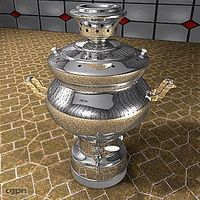
Samovar3d model
...tchen boil boiler utensils gift present
.max - samovar 3d model, royalty free license available, instant download after purchase.
3dwarehouse
free

Samovar
...newer samovars use electricity and heat water in a similar manner as an electric water...
3d_export
$26
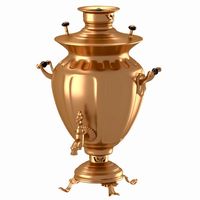
Decorated samovar with handles 3D Model
...nware ritual
decorated samovar with handles 3d model download .c4d .max .obj .fbx .ma .lwo .3ds .3dm .stl deanora 106677 3dexport
3d_ocean
$9
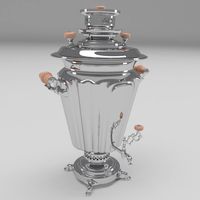
Samovar
...samovar
3docean
crockery russian samovar tea teapot vintage
hello! is pleased to present you my new project – russian samovar
cg_trader
free

Samovar
...samovar
cg trader
antique russian samovar (device for boiling water)
3d_export
$15

Russian Teapot 3D Model
...ater drink serving utensil kettles jug jar tea pot samovar metal gold classic old
russian teapot 3d model firdz3d 100709 3dexport
3d_export
$5
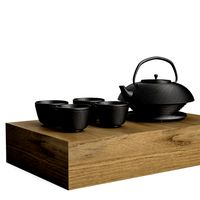
japanese teapot
...port
japanese cast iron teapot. used in the tea ceremony, this type of teapot is made specifically for the boiling of the water.
cg_trader
$15

3D ModelSamovar
... brewed tea in a glass. samovar maya tea glass boiling autodesk turkey semaver 3d modelling industrial machine industrial machine
cg_trader
$6

Samovar Base Mesh
...coocking kitchenware water copper brass heater interior design boil russian turkish charcoal houseware vessel old metal household
cg_trader
$29

Russian USSR Electric Samovar
...ctronic kitchenware kitchen utensils russian teakettle kettle boiling water boil coffee cup retro pot furniture kitchen furniture
Samovar
3d_ocean
$9

Samovar
...samovar
3docean
crockery russian samovar tea teapot vintage
hello! is pleased to present you my new project – russian samovar
turbosquid
$31

samovar
...turbosquid
royalty free 3d model samovar for download as obj on turbosquid: 3d models for games, architecture, videos. (1221321)
turbosquid
$7

samovar
...turbosquid
royalty free 3d model samovar for download as c4d on turbosquid: 3d models for games, architecture, videos. (1251118)
3ddd
free

samovar
...samovar
3ddd
самовар
самоварчик
turbosquid
$30

Samovar
...yalty free 3d model samovar for download as max, obj, and fbx on turbosquid: 3d models for games, architecture, videos. (1470549)
turbosquid
$50

Samovar
... available on turbo squid, the world's leading provider of digital 3d models for visualization, films, television, and games.
turbosquid
$32

samovar
... available on turbo squid, the world's leading provider of digital 3d models for visualization, films, television, and games.
turbosquid
$20

samovar
... available on turbo squid, the world's leading provider of digital 3d models for visualization, films, television, and games.
turbosquid
$19

Samovar
... available on turbo squid, the world's leading provider of digital 3d models for visualization, films, television, and games.
turbosquid
$15

Samovar
...d model samovar for download as 3ds, obj, fbx, blend, and dae on turbosquid: 3d models for games, architecture, videos. (1368394)
